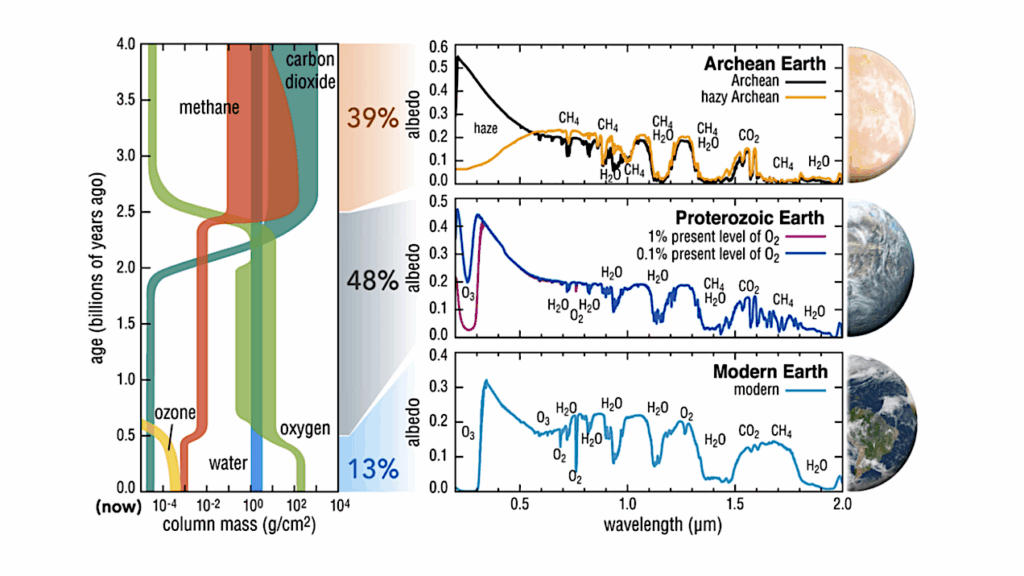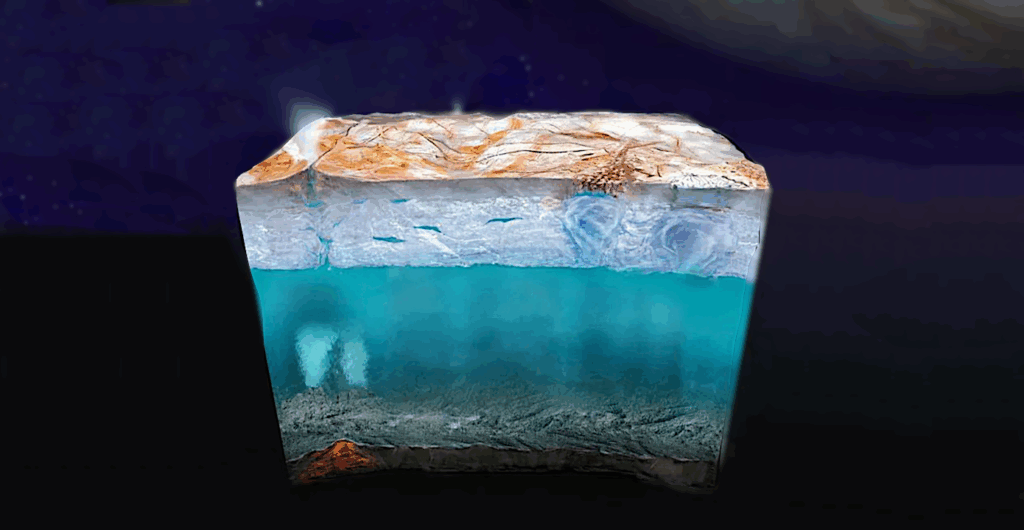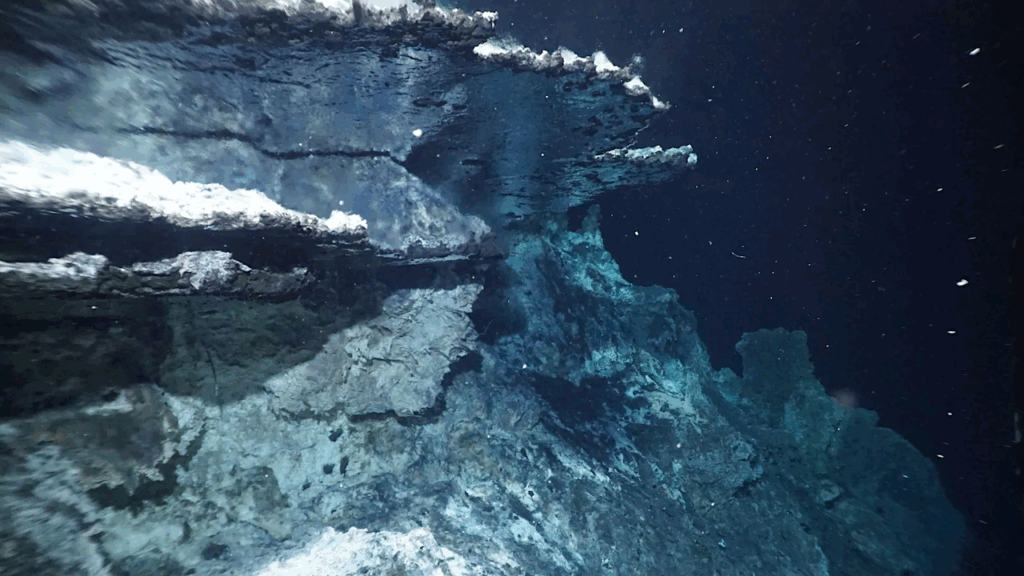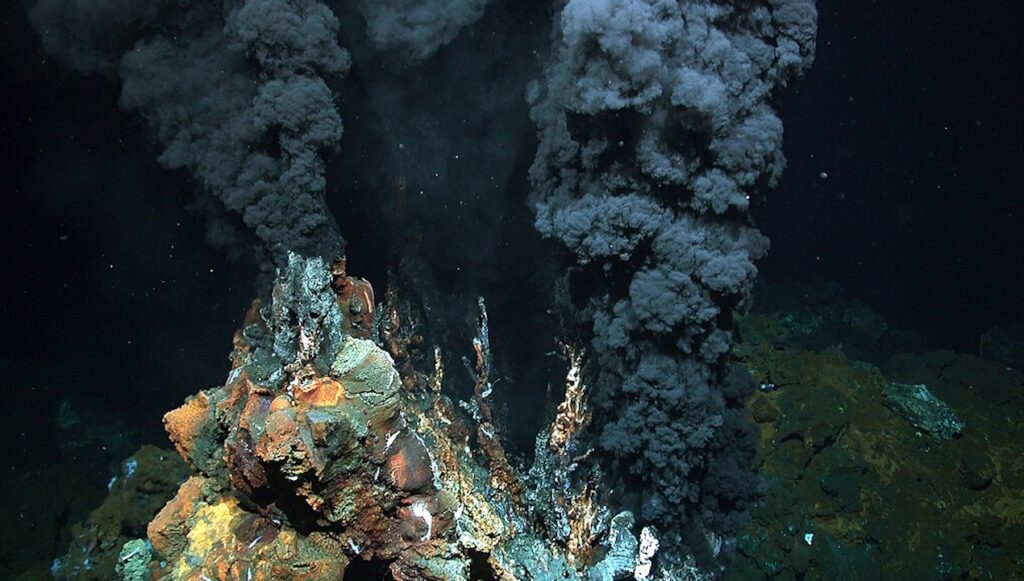Continental Microbes Helped Seed Ancient Seas With Nitrogen

inds of many evolutionary biologists, the continents were irrelevant early in the Earth’s history, because they are assumed to have been barren of life until the first plants appeared, around 0.4 billion years ago.
So all the models of how elements were cycled were based on interactions between the ocean and the atmosphere,” Garcia-Pichel says.
Recently however, evidence began to appear suggesting that the continents were far from the sterile land masses they had been portrayed as. Instead, intricate microbial communities similar to biocrusts found in present-day desert environments, colonized the early continents. Traces of their presence date to 3.2 billion years ago, well before the Great Oxygenation Event helped set the stage for the Cambrian explosion–a sudden burst of life that gave rise to most of the world’s animal phyla.
The researchers note that today, such biocrusts occupy roughly 12 percent of the Earth’s land. They are composed of filamentous cyanobacteria, which perform most of the biocrust’s carbon and nitrogen fixation and provide nutrients to the rest of the crust microbiome, while bonding soil grains together and providing microbial communities with erosion resistance.
“These communities live on light,” Garcia-Pichel says. “When plants evolved and started to accumulate, this marked their demise. There’s no light on the soil anymore because of plant litter accumulation”. However, in an early world, before the evolution of plants, there would be nothing to impede their colonization of the continents, where conditions for their growth and development would have been considerably less harsh.
As Garcia-Pichel notes, watery environments like oceans and lakes provide superior conditions for fossilization, making the detection of ancient biocrust colonies on land more challenging. This may account in part for the neglect of continental biocrusts as the primeaval land-based ecosystems for much of the planet’s history.
A new picture emerges
The team carried out a meta-analysis of their earlier data combined with other relevant literature on the cycling of nitrogen by modern biocrusts. Results demonstrate that nitrogen-cycling biocrusts are capable of importing nitrogen gas from the atmosphere and exporting ammonium and nitrate.
Quantitative analysis suggests that biocrust contribution to nitrogen cycling during the early history of the Earth would have been significant, even with limited colonization of the pre-Cambrian continents.
The notion of land-based life forms–the biocrusts–providing a significant contribution to the Earth’s early biogeochemistry represents a significant paradigm shift. New research should help establish just how far back in Earth’s record these microbial biocrusts extend and help explore their contributions to the cycling of other elements, like phosphorus.
Desert defenders
Garcia-Pichel’s center is also involved in efforts to restore biocrust communities in desert environments, where urbanization and other factors have seriously degraded them. While these communities show astonishing resilience to the harsh conditions of both desert and polar regions, they are highly sensitive to human interference, including trampling, vehicle traffic and agriculture.
Garcia-Pichel estimates that in the areas around Phoenix, where he works, only 5 percent of the original biocrusts remain. Further, climate change will not only alter the demographics of biocrusts, which vary in their composition according to region, but will render some desert environments too severely arid for their survival. Restoration of these communities is currently a challenging undertaking, part science and part art. The right mix of microbial players must be present for newly seeded communities to survive and flourish.
“When you destroy the crust, you make the soil unstable and very prone to erosion,” Garcia-Pichel says. “Areas that are deforested of crusts are sources of fugitive dust and sand. The natural protection of the desert is not there, and even moderate winds can raise a haboob. We have been funded for the last 5 years to develop ways to grow these crusts and reseed them in the field. That’s an applied part of our work, which is a new thing for our lab.”








